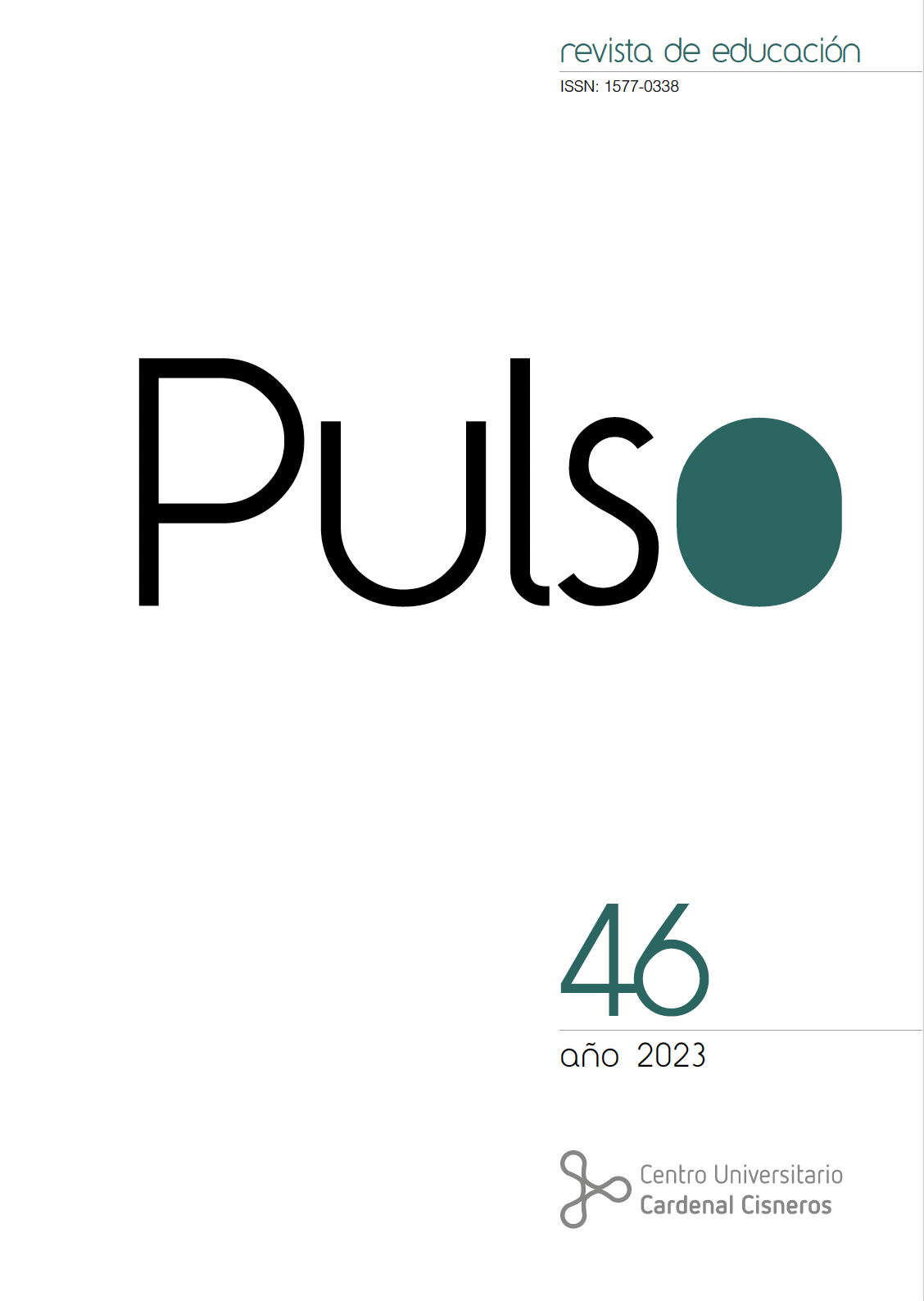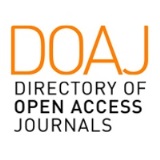Teaching Holocaust memory in a translation classroom: two didactic and research-teaching integration proposals in higher education0.
DOI:
https://doi.org/10.58265/pulso.5953Keywords:
Holocaust, Europe, Memory, The Other, Translation Competence, EducationAbstract
Insofar as it is a common negative reference point and the source of departure for European identity (Judt, 2006, p.1146), the historical event of the Holocaust has become a central part for the field of education, in general, and for higher education institutions, in particular. This paper highlights the importance of Holocaust memory as a tool for innovation in teaching in a translation classroom. To that intent and purpose, we present two didactic proposals implemented in the Grado en Lenguas Modernas y Traducción at the Universidad de Alcalá. These educational actions are aimed at enhancing translation competence, which is the main objective of the courses within which the proposals were developed, while evoking at the same time commitment and solidarity with the Other and fortifying society against hate speech; they develop thereby social and civic competences. In addition, these experiences are a good example of effective integration of research and teaching. Creating a link between research and teaching is fundamental, as these are the two core functions of universities, and one of the arenas where knowledge is created.
Downloads
References
Anderson, J. R. (1983). The architecture of cognition. Harvard University Press.
Baer, A. (2006). Holocausto: Recuerdo y representación. Losada.
Baer, A. (2011). Los vacíos de Sefarad. La memoria del Holocausto en España. Política y Sociedad, 48(3), 501-518. https://doi.org/10.5209/rev_POSO.2011.v48.n3.36416
Calvo Gascón, J. M. (2020). The stateless monument: Memory of the Spanish Republicans who died in Mauthausen. En S. J. Brenneis & G. Herrmann (Eds.), Spain, the Second World War, and the Holocaust (pp. 214-234). University of Toronto Press.
Carta de los Derechos Fundamentales de la UE. (diciembre 7, 2000). Diario oficial de la Unión Europea. https://eur-lex.europa.eu/legal-content/ES/TXT/HTML/?uri=CELEX:12012P/TXT&from=ES
Chesterman, A. (1997). Memes of translation. John Benjamins. Department of Justice. (2020). 2020 FBI hate crimes statistics. Estados Unidos. https://www.justice.gov/crs/highlights/2020-hate-crimes-statistics
Elena García, P. (2008). La organización textual aplicada a la didáctica de la traducción. Quaderns.Revista de traducció, 6, 153-167.
EMT Expert Group. (2017). Competence framework 2017. Bruselas. https://commission.europa.eu/system/files/2018-02/emt_competence_fwk_2017_en_web.pdf
Even-Zohar, I. (1979). Polysystem theory. Poetics Today, 1(1-2), 287-310.
Even-Zohar, I. (1990). The position of translated literature within the literary polysystem. Poetics Today, 11(1), 45-51.
Fernández-Gil, M. J. (2019). Anne Frank in the ultra-Catholic Franco period: Challenge and exploitation of the American mythification of Het Achterhuis. Target, 31(3), 420-233.https://doi.org/10.1075/target.18047.fer
Fernández-Gil, M. J. (2023). Ana Frank: Soterrada en español; al descubierto en catalán. Babel, 69(1),20-45. https://doi.org/10.1075/babel.00311.fer
Finkelstein, N. G. (2014). La industria del Holocausto: Reflexiones sobre la explotación del sufrimiento judío (M. C. Fernández, Trad.).Ediciones Akal.
Gerling, V., & Santana López, B. (Eds.). (2018). Literaturübersetzen als Reflexion und Praxis (Vol. 24). Narr Francke Attempto Verlag.
Gobierno de España. (enero 31, 2023). Plan nacional para la implementación de la estrategia europea de lucha contra el antisemitismo. https://www.lamoncloa.gob.es/consejodeministros/resumenes/Documents/2023/310123-PlanNacionalAntisemitismo.pdf
Gürtler, C., & Schmid-Bortenschlager, S. (2002). Erfolg und Verfolgung: österreichische Schriftstellerinnen 1918-1945. Residenz-Verlag.
Hurtado Albir, A. (1996). La enseñanza de la traducción directa “general”. Objetivos de aprendizaje y metodología. En A. Hurtado Albir (Ed.), La enseñanza de la traducción (pp. 31-56). Publicaciones de la Universitat Jaume I.
Hurtado Albir, A., dir. (1999). Enseñar a traducir: metodología en la formación de traductores e intérpretes. Edelsa.
Judt, T. (2006). Posguerra. Una historia de Europa desde 1945 (J. Cuéllar & V. E. Gordo, Trads.). Taurus.
Karolle, J. (2005). Imre Kertész´s Fatelessness as historical fiction. En L. O. Vasvári & S. T. de Zepetnek (Eds.), Imre Kertész and Holocaust literature (pp. 89-96). Purdue University Press.
Magilow, D. H. & Silverman, L. (2015). Holocaust representations in history: An introduction. Bloomsbury Publishing.
Mate Rupérez, M. R. (2000). Presentación. Isegoría, 23, 5-15. https://doi.org/10.3989/isegoria.2000.i23.533
Ministerio del Interior. 2021. Informe sobre la evolución de los delitos de odio en España 2021.https://www.interior.gob.es/opencms/es/servicios-al-ciudadano/delitos-de-odio/estadisticas/
Nord, C. (1988). Übersetzungshandwerk—Übersetzungskunst. Was bringt die Translationstheorie für das literarische Übersetzen? Lebenden Sprachen, 2, 51-57.
ONU. (noviembre 1, 2005). Resolución 60/7. https://documents-dds-ny.un.org/doc/UNDOC/GEN/N05/487/96/PDF/N0548796.pdf?OpenElement
PACTE. (2003). Building a translation competence model. En F. Alves (Ed.), Triangulating translation: Perspectives in process oriented research (pp. 43-66). John Benjamins.
Roskies, D. G. & Diamant, N. (2012). Holocaust literature: A history and guide. Brandeis University Press.
Schäpers, A. (2016). La especificidad cultural del texto literario: propuesta didáctica de sensibilización. Quaderns. Revista de traducció, 23, 37-58.
Simó, M. (2020). Teaching and learning about the Holocaust in Spain. En S. J. Brenneis (Ed.), Spain, the Second World War and the Holocaust (pp. 586-599). University of Toronto Press.
Sommerfeld, B. (2016). Problemfelder der literarischen Übersetzungsanalyse. Wydawnictwo Naukowe UAM.
Toury, G. (1995). Descriptive Translation Studies and beyond. John Benjamins.
Tratado de Lisboa. (diciembre 13, 2007). Diario oficial de la Unión Europea. https://eur-lex.europa.eu/legal-content/ES/TXT/HTML/?uri=CELEX:12016ME/TXT&from=ES
Weinberg Alarcón, J., Caamaño Matamala, R. & Mondaca Becerra, L. (2018). Comprensión lectora: propuestas didácticas para el lector-traductor. Sendebar, 29, 305-327.
Downloads
Published
How to Cite
Issue
Section
License
Copyright (c) 2023 Pulso. Revista de educación

This work is licensed under a Creative Commons Attribution-NonCommercial-NoDerivatives 4.0 International License.
This journal offers immediate open access to its content based on the idea that offering readers free access to research favours a global exchange of knowledge.
Papers are published in the electronic version of the journal under a Creative Commons License: Attribution-NonCommercial-No derivatives 4.0 International
Authors are allowed and encouraged to promote the post-print version (reviewed and accepted for publication version) of their work online before publishing them. This favours their earlier circulation and dissemination and thus a possible increase in their citation and reach among the academic community.














